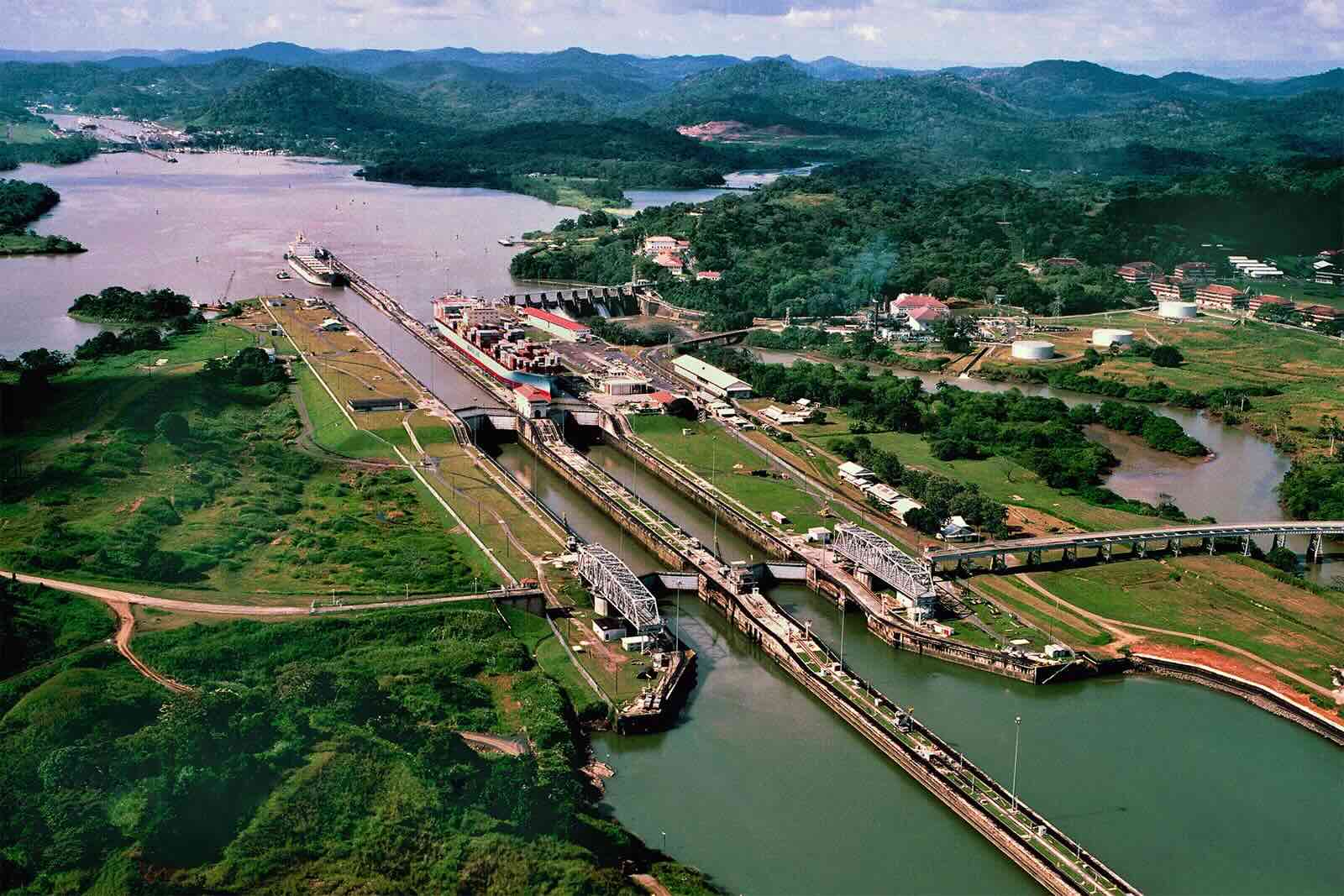Home>diy>Building & Construction>Why Road Construction Takes So Long


Building & Construction
Why Road Construction Takes So Long
Modified: October 18, 2024
Discover the reasons why road construction projects often seem to take forever. Understand the complexities and challenges of building construction.
(Many of the links in this article redirect to a specific reviewed product. Your purchase of these products through affiliate links helps to generate commission for Storables.com, at no extra cost. Learn more)
Introduction
Road construction projects are often met with frustration and impatience from the public. The seemingly endless traffic congestion, detours, and delays can leave commuters and travelers wondering why road construction takes so long. However, it is essential to understand that road construction is a complex and multifaceted process that involves numerous stages and considerations.
The construction of roads involves a delicate balance between various parties, including government agencies, construction companies, engineers, and environmental specialists. Each stage of the construction process requires meticulous planning, coordination, and implementation to ensure the safety of workers, maintain traffic flow, and uphold environmental regulations.
In this article, we will explore the various factors that contribute to the extended timeline of road construction projects, highlighting the complexity of the process and the careful considerations that are necessary for successful completion.
Key Takeaways:
- Road construction projects are complex, requiring meticulous planning, coordination, and execution. Challenges such as adverse weather and utility relocations can impact timelines, but prioritizing safety and quality ensures successful infrastructure delivery.
- From environmental impact assessment to completion and handover, road construction demands attention to detail and adherence to regulatory requirements. Embracing innovative techniques and sustainable practices can optimize processes and improve overall project efficiency.
Complexity of Road Construction Projects
Road construction projects are complex endeavors that require careful planning, coordination, and execution. They involve a wide range of activities and professionals, including engineers, architects, surveyors, construction workers, and environmental specialists. Here are some of the factors that contribute to the complexity of road construction projects:
- Infrastructure Integration: When constructing a new road or expanding an existing one, it is crucial to consider how it integrates with the existing infrastructure. This may involve coordinating with utility companies to relocate underground pipes and cables or reroute them to avoid conflicts with the road construction.
- Environmental Considerations: Road construction projects must comply with environmental regulations and mitigate the impact on nearby ecosystems. This includes conducting environmental impact assessments, implementing erosion control measures, and preserving natural habitats.
- Traffic Management: A major challenge in road construction is maintaining traffic flow and ensuring the safety of drivers and workers. This requires careful planning of detours, temporary road closures, and traffic control measures to minimize disruptions and accidents.
- Materials and Equipment: Road construction projects require a wide range of materials, such as asphalt, concrete, aggregates, and steel. Procuring these materials in the right quantities and ensuring they meet quality standards is essential for a successful construction project. Additionally, the availability and maintenance of specialized construction equipment, such as graders, paving machines, and compactors, add to the complexity.
- Weather Conditions: Weather plays a significant role in road construction timelines. Extreme weather conditions, such as heavy rain or snow, can cause delays and hinder construction activities. Adequate planning and flexibility in scheduling are necessary to minimize the impact of adverse weather conditions.
- Stakeholder Engagement: Road construction projects often impact nearby communities, businesses, and residents. Engaging with these stakeholders is essential to address concerns, provide timely updates, and minimize disruptions. This involves communication and coordination with local authorities, residents, and businesses throughout the duration of the project.
The complexity of road construction projects requires careful planning, execution, and management to ensure their successful completion. While the process may seem lengthy and frustrating, it is crucial to prioritize safety, quality, and environmental considerations to develop efficient and sustainable road infrastructures.
Environmental Impact Assessment
Before embarking on any road construction project, an environmental impact assessment (EIA) is conducted to evaluate the potential environmental effects of the project. The primary purpose of an EIA is to identify and assess the potential negative impacts on the natural and socio-economic environment and develop measures to minimize or mitigate those impacts.
The EIA process involves several steps that include:
- Scoping: This initial stage involves determining the extent and boundaries of the EIA study. It identifies the potential negative environmental impacts that need to be assessed, establishing the scope and objectives of the assessment.
- Baseline Study: A comprehensive baseline study is conducted to evaluate the existing environmental conditions of the project area. This includes assessing the quality of air, water bodies, soil conditions, flora, fauna, noise levels, and socio-economic aspects such as cultural heritage and community well-being.
- Impact Identification: During this phase, the potential impacts of the road construction project are identified. These may include habitat destruction, soil erosion, water pollution, air pollution from construction activities, noise pollution, and disruption to local communities and wildlife.
- Impact Assessment: The identified impacts are then assessed in terms of their magnitude, duration, geographical extent, and significance. This helps determine the significance of the impacts on the environment and provides the basis for developing mitigation measures.
- Mitigation Measures: Based on the impact assessment, mitigation measures are proposed to minimize or eliminate potential negative impacts. These measures may include implementing erosion control measures, using sustainable construction practices, preserving ecologically sensitive areas, and restoring or compensating for any environmental damage caused.
- Public Consultation: The public and stakeholders, including local communities, environmental groups, and government agencies, are given the opportunity to provide input on the project and its potential impacts. Public consultations help identify concerns, gather local knowledge, and incorporate any necessary changes or improvements into the project design and mitigation measures.
- Reporting and Approval: A detailed report is prepared, documenting the findings of the EIA process, including the impact assessment, proposed mitigation measures, and public consultation outcomes. This report is submitted to the relevant regulatory authorities for review and approval before construction can commence.
The environmental impact assessment is a crucial step in road construction projects to ensure that environmental considerations are addressed from the outset. By identifying potential negative impacts and implementing appropriate mitigation measures, road construction can be carried out in an environmentally responsible and sustainable manner, minimizing harm to ecosystems and communities.
Pre-construction Planning
Pre-construction planning is a crucial phase of road construction projects that involves detailed preparation and coordination before any physical work begins. This phase sets the foundation for the entire construction process and ensures that all necessary permits, resources, and plans are in place.
Here are key aspects of pre-construction planning:
- Project Scope and Objectives: Clearly defining the scope and objectives of the road construction project is essential. This includes determining the length, width, and purpose of the road, as well as any additional features or amenities required.
- Project Timeline: Developing a realistic and achievable timeline is crucial for successful project management. This involves estimating the duration of each construction phase, including any potential delays or contingencies.
- Cost Estimation and Budgeting: Accurately estimating the project costs involves considering material costs, equipment rentals, labor expenses, permits, and any unforeseen contingencies. A thorough budget is essential for financial planning and resource allocation.
- Permitting and Regulatory Requirements: Obtaining the necessary permits and approvals from relevant regulatory bodies is crucial. This may include environmental permits, land acquisition permits, zoning approvals, and safety certifications.
- Surveying and Geotechnical Assessment: Conducting thorough surveys and geotechnical assessments of the project site is crucial for determining the topography, soil conditions, and any potential obstacles or challenges that may affect the construction process.
- Public Consultation and Stakeholder Engagement: Engaging with local communities, businesses, and other stakeholders is essential to address concerns, gather input, and build positive relationships. This may involve public meetings, open houses, or consultations with affected parties.
- Contractor Selection: Choosing the right contractor or construction team is critical for the success of the project. Evaluating their experience, expertise, previous work, and references can help ensure quality construction and adherence to timelines.
- Material Procurement: Identifying and procuring the required construction materials, such as aggregates, asphalt, concrete, and steel, is a crucial step. This involves considering sustainability, quality, cost-efficiency, and timely delivery.
- Risk Assessment and Management: Identifying potential risks and developing mitigation strategies is essential. This includes assessing potential hazards, such as natural disasters, unforeseen site conditions, or worker safety issues, and implementing preventive measures.
By investing time and effort in thorough pre-construction planning, road construction projects can start on a solid foundation, ensuring that all necessary resources, approvals, permits, and stakeholder engagement activities are in place. This sets the stage for a smooth construction process and enhances the probability of successful project completion.
Acquisition of Land and Permits
One of the key challenges in road construction projects is the acquisition of land and obtaining the necessary permits. These processes are essential to ensure that the project has the required space for construction and complies with legal and regulatory requirements. Here’s an overview of the steps involved in land acquisition and permit procurement:
- Land Survey and Assessment: Before acquiring land for road construction, a thorough survey and assessment of the area are conducted. This includes identifying the boundaries, assessing the suitability of the land for construction, and evaluating any potential environmental or social impacts.
- Public Notification and Engagement: Depending on the project’s scale and impact, public notification and engagement activities may be required. This can involve informing the public, holding community meetings, and addressing concerns and feedback to ensure transparency throughout the process.
- Compensation and Negotiation: Landowners affected by the road construction project must be compensated for their land acquisition. Compensation is determined based on the market value of the land, potential economic impact, and any improvements made on the property.
- Legal and Title Search: Validating land ownership, conducting title searches, and ensuring that there are no legal disputes or encumbrances on the land are critical steps. This helps to establish a clear title for the acquired land and mitigate potential legal issues in the future.
- Permitting Process: Road construction projects require obtaining the necessary permits and approvals from relevant authorities. This typically includes environmental permits, building permits, zoning approvals, and other permits based on the project’s specific requirements.
- Environmental Impact Assessment (EIA): As mentioned earlier, an EIA is often required to assess and mitigate the environmental impacts of the construction project. This assessment provides valuable information for the permitting process and helps identify potential mitigation measures.
- Public Road and Utility Access Rights: When constructing roads, it is essential to establish the necessary access rights for public roads and utilities such as water, electricity, and telecommunications. This involves coordinating with relevant authorities and utility providers to ensure a smooth construction process.
- Project Evaluation and Approval: Once all land acquisition and permitting processes are completed, the project is evaluated by the relevant regulatory authorities for final approval. This involves reviewing the proposed plans, permits obtained, and any environmental or social considerations.
Acquiring land and obtaining permits for road construction projects involves a detailed and sometimes lengthy process. It requires careful coordination between the construction team, regulatory authorities, and affected landowners. Proper attention to land acquisition and permitting ensures that the project has the necessary space and legal approvals, laying the groundwork for smooth and compliant construction operations.
Read more: Why Is Alexa Taking So Long To Respond
Design and Engineering
The design and engineering phase of a road construction project is a critical step that determines the functionality, safety, and aesthetics of the final road infrastructure. It involves a comprehensive process of planning, analyzing, and creating detailed design specifications that meet the project’s objectives. Here’s an overview of the key steps involved in the design and engineering phase:
- Preliminary Design: The preliminary design phase involves creating conceptual designs based on the project’s scope and objectives. This includes determining the road alignment, width, curves, slopes, and intersections, taking into consideration factors such as traffic patterns, road capacity, and safety requirements.
- Topographic Survey and Mapping: A topographic survey is conducted to gather accurate data about the project site’s physical features and existing conditions. This includes mapping the terrain, identifying natural features, and collecting elevation data. The survey data is used to inform the design process and ensure proper alignment and integration with the surrounding environment.
- Geotechnical Analysis: Geotechnical analysis involves studying the soil properties and characteristics of the project site. This helps determine the type of foundation required, assess the stability of slopes, and identify any potential soil erosion or settlement issues that may affect the road’s structural integrity.
- Structural Design: Structural design focuses on designing the road pavement, bridges, culverts, and other structures that are part of the road infrastructure. It includes selecting appropriate materials, determining load-bearing capacities, and ensuring the structural integrity of the road components.
- Drainage Design: Proper drainage design is essential to prevent water accumulation on the road surface, which can lead to deteriorating road conditions and accidents. It involves planning and designing drainage systems, including ditches, gutters, and stormwater retention basins, to efficiently channel water away from the road.
- Utility Coordination: During the design phase, coordination with utility companies is necessary to ensure that underground utilities, such as water and sewer lines, gas lines, and telecommunication cables, are properly integrated and do not conflict with the road construction. This includes identifying potential conflicts, designing utility relocation plans, and collaborating with utility companies to execute the necessary changes.
- Construction Specifications: Detailed construction specifications are prepared, outlining the required materials, construction techniques, and quality standards. These specifications provide clear instructions for the construction team, ensuring that the road is built to the desired standards and can withstand the anticipated traffic loads and environmental conditions.
- Environmental Considerations: Environmental factors, such as preserving habitats, minimizing water pollution, and promoting sustainability, are integral to the design and engineering phase. This involves incorporating eco-friendly design features, implementing erosion control measures, and considering the long-term environmental impact of the road construction.
The design and engineering phase of road construction projects is a meticulous process that requires the expertise of engineers, architects, and other professionals. By carefully considering factors such as road alignment, structural integrity, drainage systems, utility coordination, and environmental considerations, the design phase sets the stage for the successful execution of the road construction project.
Utility Relocation
Utility relocation is an essential aspect of road construction projects that involves moving or adjusting existing utility lines and infrastructure to accommodate the planned road improvements. Relocating utilities is necessary to ensure that they do not conflict with the alignment, grading, or other components of the new road. Here’s an overview of the utility relocation process:
- Identification and Assessment: The first step in utility relocation is identifying the existing utilities in the project area. This includes underground utilities such as water and sewer lines, gas pipelines, electrical cables, and telecommunication networks. The utilities are surveyed and assessed to determine their location, depth, condition, and potential conflicts with the new road design.
- Engagement with Utility Companies: Coordination and communication with the utility companies that own and operate the utilities is crucial. This involves notifying the utility companies of the project, sharing the road design plans, and discussing the necessary adjustments or relocations needed.
- Designing Relocation Plans: Once the utility locations and potential conflicts are identified, relocation plans are developed. This includes determining the new alignment and depth of the utilities, assessing the impact on existing customers, and coordinating with the utility companies to implement the relocation process.
- Securing Permits and Approvals: Utility relocations may require obtaining permits and approvals from relevant authorities. This could involve local municipalities, transportation agencies, or utility regulatory bodies to ensure compliance with safety codes and regulations.
- Temporary and Permanent Relocations: Depending on the project’s timeline and utility requirements, relocation may be temporary or permanent. Temporary relocations are typically done to facilitate construction activities and ensure the safety of both workers and utility lines. Permanent relocations are carried out when the existing utilities cannot coexist with the new road infrastructure.
- Construction Progress Monitoring: During the road construction process, the utility relocation work is closely monitored to ensure that it aligns with the project timeline and specifications. Any delays or issues related to the utility relocation are promptly addressed to minimize impacts on the overall construction schedule.
- Restoration and Safety: After utility relocation is completed, necessary restoration work is carried out, ensuring that the affected areas are restored to their pre-construction condition. This includes filling trenches, repairing pavements, and restoring the surrounding vegetation. Safety measures, such as marking the location of underground utilities, are also implemented to prevent accidents and damage during future construction or excavation.
Utility relocation is a complex and critical part of road construction projects. Effective coordination, communication, and collaboration with utility companies are paramount to ensure the efficient removal and reinstallation of utilities while minimizing disruptions to essential services. By properly addressing utility relocation requirements, road construction projects can proceed smoothly, eliminating potential conflicts and ensuring the safety and functionality of the infrastructure.
Plan your travel routes in advance and allow extra time for potential delays due to road construction. Stay updated on construction schedules and road closures to avoid unnecessary frustration.
Traffic Management and Safety Measures
Traffic management and safety measures are of paramount importance in road construction projects to ensure the safety of both construction workers and road users. With the potential disruptions and hazards posed by construction activities, effective traffic management and safety measures are essential to minimize accidents, congestion, and delays. Here are some key aspects of traffic management and safety measures in road construction:
- Traffic Control Plans: Traffic control plans are developed to establish safe traffic flow patterns and detours during construction. These plans consider factors such as road capacity, traffic volume, and surrounding infrastructure. They outline the placement of traffic signs, temporary traffic lights, flaggers, and barriers to guide motorists and pedestrians safely through the construction zones.
- Work Zone Safety: Proper signage and barricades are used to clearly indicate construction zones and potential hazards. This includes warning signs, speed limit reductions, and signalized pedestrian crossings. Worksite safety protocols are implemented to protect construction workers, and additional safety precautions, such as personal protective equipment, are enforced.
- Temporary Road Closures and Detours: In some cases, temporary road closures or detours may be necessary to facilitate construction activities and ensure the safety of workers and road users. These closures and detours are carefully planned and communicated to the public in advance to minimize disruptions and provide alternate routes.
- Coordinating with Local Authorities: Collaboration with local authorities, including transportation agencies and law enforcement, is crucial for effective traffic management. Regular communication and coordination ensure that traffic control measures are implemented efficiently and that emergency services can access the construction site as needed.
- Public Awareness and Communication: Public awareness campaigns play a vital role in promoting safety and informing the public about construction activities. This can involve providing regular project updates, sharing information about changes in traffic patterns, announcing temporary road closures, and emphasizing the importance of observing posted signage and speed limits.
- Monitoring and Adjustments: Continuous monitoring of traffic flow and safety conditions within construction zones allows for timely adjustments in traffic management measures. This includes evaluating the effectiveness of traffic control plans, identifying potential bottlenecks or hazards, and implementing modifications as necessary to optimize traffic flow and safety.
- Worker Safety Training: Providing comprehensive safety training to construction workers is essential to mitigate the risks associated with working in a dynamic construction environment. This includes training on personal protective equipment, safe work practices, equipment operation, and emergency response procedures.
- Quality Control and Inspections: Regular quality control inspections are conducted to ensure that traffic management and safety measures are implemented correctly. This includes checking the proper placement of signage and barriers, monitoring adherence to traffic control plans, and addressing any deficiencies promptly.
By prioritizing effective traffic management and safety measures, road construction projects can reduce the potential for accidents, maintain smooth traffic flow, and protect the safety of workers and road users alike. Proper planning, coordination, and communication are essential to ensure a safe and efficient construction process.
Construction Process
The construction process is the core stage of road construction projects where the planned designs and engineering specifications are brought to life. This phase involves a series of precise activities carried out by skilled workers and specialized equipment to transform the road design into a functional and durable infrastructure. Here is an overview of the construction process:
- Site Preparation: Before any construction work can begin, the project site needs to be prepared. This includes clearing vegetation, removing debris, and ensuring proper access to the construction area. Site preparation also involves setting up the necessary construction facilities such as temporary offices, storage areas, and worker accommodation if required.
- Earthworks and Grading: The earthworks phase involves excavation and leveling of the land to achieve the desired road alignment and profile. This may include digging trenches, backfilling, compacting, and shaping the terrain using heavy machinery such as excavators, bulldozers, and graders. Proper compaction is crucial to ensure the stability and longevity of the road foundation.
- Pavement Construction: The pavement construction process starts with the sub-base layer, which provides a stable foundation for the road. The sub-base is followed by the base layer and the wearing course, which make up the road surface. These layers are typically made of materials such as crushed stone, aggregates, asphalt, or concrete, depending on the project specifications.
- Drainage System Installation: To ensure proper stormwater management and prevent water accumulation on the road, drainage systems are installed during the construction process. This includes constructing and connecting pipes, culverts, gutters, and drainage basins to redirect and manage water flow away from the road. Proper installation and maintenance of the drainage system are essential for the road’s long-term performance.
- Road Markings and Signage: Once the road surface is complete, markings such as lane lines, pedestrian crossings, and stop lines are painted to guide road users. Signage, including speed limit signs, directional signs, and warning signs, are installed to provide important information and enhance traffic safety.
- Traffic Signal and Street Lighting Installation: If necessary, the construction process may also include the installation of traffic signals and street lighting to enhance traffic control and visibility during day and night. These systems are vital for ensuring safe and efficient road operations.
- Landscaping and Beautification: As the construction nears completion, attention is given to landscaping and beautification efforts. This may involve planting trees, shrubs, and grass, as well as adding decorative elements to enhance the aesthetics of the road corridor and blend it harmoniously with the surrounding environment.
- Final Inspections and Quality Checks: Before the road can be opened to the public, final inspections and quality checks are conducted. These ensure that the construction meets design specifications, safety standards, and regulatory requirements. Any necessary adjustments or corrections are made to ensure the road’s integrity and functionality.
The construction process requires meticulous planning, skilled labor, and the efficient utilization of specialized construction equipment. By following proper construction techniques, quality control measures, and adhering to safety protocols, road construction projects can deliver well-built and durable road infrastructure that serves the community for years to come.
Read more: Why Are IKEA Curtains So Long
Unforeseen Challenges and Delays
Unforeseen challenges and delays are inevitable in road construction projects due to a variety of factors. While careful planning and project management aim to mitigate risks and ensure timely completion, unexpected obstacles can arise throughout the construction process. Here are some common unforeseen challenges and delays that road construction projects may encounter:
- Adverse Weather Conditions: Extreme weather events such as heavy rain, snowstorms, or prolonged periods of inclement weather can significantly impact construction timelines. These conditions can make it unsafe or impractical to carry out certain construction activities, leading to delays and interruptions in the project schedule.
- Unstable Ground Conditions: The discovery of unforeseen soil instability, rock formations, or underground water can pose challenges during excavation or foundation work. These unexpected ground conditions may require additional engineering solutions, such as soil stabilization or reinforcement, which can extend the construction timeline.
- Utility Line Encounters: Despite thorough surveys and utility coordination, unexpected encounters with unidentified or improperly mapped utility lines can occur during excavation or construction activities. This can require additional time for utility relocations or adjustments to prevent damage or accidents, leading to delays in the construction process.
- Change Orders and Design Modifications: As construction progresses, unforeseen design modifications or client-requested changes may arise. These changes can impact the project scope and require additional time for review, approvals, and implementation. Managing change orders efficiently is essential to minimizing delays and maintaining project momentum.
- Permitting and Regulatory Delays: Obtaining necessary permits and approvals from regulatory authorities can sometimes take longer than anticipated. Delays may arise due to backlog, additional documentation requirements, or changes in regulations. These delays can impact the overall construction timeline and require careful coordination and monitoring.
- Unforeseen Site Conditions: Despite thorough site assessments, unexpected site conditions such as hidden archeological artifacts, environmental contamination, or unexpected underground structures may be uncovered during construction. Addressing these unforeseen conditions may require additional expert consultations, investigations, and compliance with legal requirements, leading to project delays.
- Supply Chain Disruptions: Delays in the delivery of construction materials, equipment, or specialized components can disrupt the construction process. Factors such as material shortages, transportation issues, or labor strikes can impact the availability of essential resources and lead to construction delays.
- Inadequate Planning or Project Management: Poor project planning, inadequate resource management, or ineffective project coordination can contribute to delays and challenges. Insufficient communication, unrealistic scheduling, or inadequate workforce allocation can hinder progress and necessitate adjustments to ensure the project stays on track.
Dealing with unforeseen challenges and delays requires adaptability, effective communication, and proactive problem-solving. Construction project managers and teams must address these challenges promptly and implement strategies to mitigate their impact. By developing contingency plans, maintaining open lines of communication, and closely monitoring progress, road construction projects can navigate unexpected obstacles and ensure successful completion.
Quality Control and Testing
Quality control and testing are critical components of road construction projects to ensure that the constructed infrastructure meets the required standards of safety, durability, and functionality. Through rigorous inspections, testing, and adherence to quality assurance protocols, the construction team can identify and address any deficiencies or deviations from the project specifications. Here is an overview of the quality control and testing process:
- Materials Testing: Quality control begins with testing the materials used in road construction. This includes conducting tests to assess the properties and quality of aggregates, asphalt, concrete, and other materials. These tests evaluate factors such as strength, density, moisture content, and compaction to ensure that they meet the specified standards.
- Quality Assurance Plan: A detailed quality assurance plan is developed before construction commences. This plan outlines the specific measures, procedures, and responsibilities for quality control during each construction phase. It establishes guidelines for inspections, testing protocols, and documentation requirements to ensure consistent adherence to quality standards.
- Inspections and Checks: Regular inspections are conducted throughout the construction process to verify that construction practices align with the project plans and quality requirements. Inspections may involve assessing the proper installation of drainage systems, pavement layers, utility connections, and adherence to safety regulations. Any non-compliance or defects are promptly identified and addressed.
- Field Testing: Field testing is performed to assess the quality and performance of the constructed road. This may include measuring the thickness and density of pavement layers, conducting smoothness tests, checking slopes and alignments, and evaluating the functionality of traffic control devices. Field testing ensures that the constructed road meets the required standards of smoothness, stability, and safety.
- Laboratory Testing: Laboratory testing supplements field testing by providing more detailed analysis of construction materials. This may involve testing samples of aggregates, concrete, and asphalt in controlled laboratory environments to assess their strength, durability, and other properties. Laboratory tests help ensure that the materials used meet the specified criteria and contribute to the long-term performance of the road.
- Documentation and Reporting: Accurate documentation is crucial throughout the quality control and testing process. This includes recording test results, inspection findings, and any necessary corrective actions taken. Comprehensive reports are prepared to provide an overview of the construction quality and serve as a reference for future maintenance or upgrades.
- Independent Auditing: In some cases, independent auditing by a third-party agency may be conducted to verify the quality control procedures and ensure compliance with standards and regulations. The independent audit provides an objective assessment and helps instill confidence in the quality of the constructed road.
- Continuous Improvement: Quality control and testing processes should prioritize continuous improvement. Constructive feedback from inspections, tests, and project stakeholders is essential for identifying areas of improvement and implementing corrective measures. Lessons learned from each project can be used to enhance future construction practices and quality assurance processes.
By implementing robust quality control measures and rigorous testing protocols, road construction projects can deliver infrastructure that meets the required standards of safety, durability, and performance. Adherence to quality assurance protocols helps ensure the long-term functionality and reliability of the road for the benefit of the community and road users.
Completion and Handover
The completion and handover stage marks the final phase of a road construction project, during which the construction work is finalized, inspected, and officially handed over to the relevant authorities or stakeholders. This stage involves a comprehensive set of activities to ensure that the constructed road meets all required standards and is ready for public use. Here is an overview of the completion and handover process:
- Final Inspections: Prior to the official handover, a series of final inspections are carried out to verify the completed road infrastructure. These inspections involve thorough assessments of all elements, including the road surface, drainage systems, signage, road markings, lighting, and any associated structures or amenities.
- Performance Testing: Performance testing is conducted to assess the functionality, safety, and durability of the road. This may involve conducting tests for smoothness, skid resistance, load-bearing capacity, and overall compliance with the project specifications. Any issues identified during testing are addressed before final acceptance.
- Defect Rectification: If any defects or deficiencies are discovered during the final inspections, a process of rectification is initiated. This involves addressing identified issues, such as repairing pavement cracks, addressing drainage problems, or resolving any non-compliance with quality standards or contractual requirements.
- Independent Certifications: Independent certifications may be obtained to validate the quality and compliance of the constructed road. These certifications may include ISO certifications, safety certifications, or sustainability certifications, depending on the project’s objectives and requirements.
- Documentation and Handover: Comprehensive documentation is prepared to compile all relevant records, including inspection reports, test results, certifications, as-built drawings, and warranties. This documentation serves not only as a record of the construction process but also as a reference for future maintenance, repairs, or upgrades. Once documentation is completed, the official handover is conducted, transferring responsibility and ownership of the road to the appropriate authority or stakeholders.
- Public Communication: Public communication plays a crucial role in informing the community about the completion of the road construction project. This may involve issuing press releases, organizing local events, or conducting inauguration ceremonies to celebrate the opening of the road. Transparent communication helps foster public confidence and awareness of the new road infrastructure.
- Warranty Period: Following the handover, a warranty period is usually in place to address any latent defects or issues that may arise after the completion of the project. The construction team remains responsible for rectifying these issues during the warranty period as agreed upon in the contractual terms.
- Maintenance Planning and Handover: As part of the handover process, maintenance planning is carried out to ensure the long-term upkeep and sustainability of the road. Maintenance responsibilities, schedules, and procedures are established, and maintenance documentation is provided to the relevant entities to guide future maintenance and repair activities.
The successful completion and handover of a road construction project represent the culmination of extensive planning, coordination, and construction efforts. By conducting thorough inspections, addressing any identified defects, and ensuring proper documentation and communication, the newly constructed road infrastructure can be ready for safe and efficient use by the community.
Conclusion
Road construction projects are complex endeavors that require meticulous planning, coordination, and execution. From the initial stages of design and engineering to the final completion and handover, road construction involves a series of activities and considerations to ensure the successful delivery of safe and functional road infrastructure.
Throughout the construction process, various challenges and delays can arise, including adverse weather conditions, unexpected site conditions, utility relocations, and design modifications. However, by implementing effective project management strategies and maintaining open lines of communication, these challenges can be overcome, and road construction projects can stay on track.
Key aspects of road construction, such as environmental impact assessment, pre-construction planning, acquisition of land and permits, utility relocation, traffic management and safety measures, quality control and testing, and the completion and handover process, require careful attention and adherence to regulatory requirements.
By prioritizing safety, quality, and environmental considerations, road construction projects can minimize the impact on surrounding communities and ecosystems while delivering durable and well-designed road infrastructure that meets the needs of road users.
It is essential to recognize the vital role that road construction plays in improving transportation networks, supporting economic growth, and enhancing connectivity. Though road construction projects may cause temporary inconveniences and delays, they ultimately contribute to more efficient and safer travel for vehicles, pedestrians, and cyclists.
As we move forward, it is crucial to continue embracing innovative construction techniques and sustainable practices that reduce environmental impact and enhance the durability and longevity of road infrastructure. By leveraging technology and incorporating smart solutions, we can further optimize road construction processes and improve overall project efficiency.
In conclusion, road construction projects are complex endeavors that require a harmonious blend of planning, engineering, environmental considerations, and effective project management. Through careful execution, attention to quality, and adherence to safety protocols, road construction projects can successfully transform visions into tangible infrastructure, benefiting communities and enhancing transportation networks for years to come.
Frequently Asked Questions about Why Road Construction Takes So Long
Was this page helpful?
At Storables.com, we guarantee accurate and reliable information. Our content, validated by Expert Board Contributors, is crafted following stringent Editorial Policies. We're committed to providing you with well-researched, expert-backed insights for all your informational needs.














0 thoughts on “Why Road Construction Takes So Long”